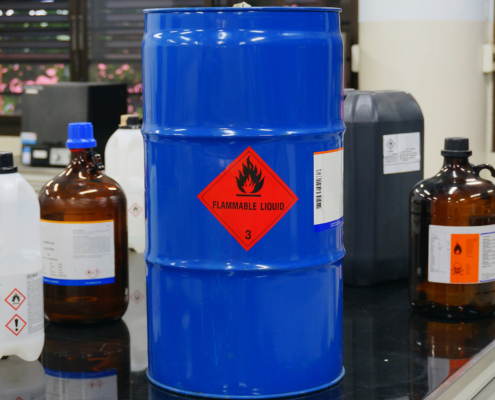
Understanding Uncertainty in Scientific Measurement
Uncertainty in measurement is inevitable, but there are many ways to reduce the risk of inconsistent results.
In this article, we’ll discuss what the uncertainty in scientific measurement is, identify common sources of error in measuring devices and processes, discuss how to reduce estimated uncertainty, and dive into a few benefits of accurate measuring devices from providers like Axiom Products.
Here’s everything you need to know:
What Is Uncertainty in Scientific Measurement?
Uncertainty in scientific measurement refers to the range of possibilities that could make a mixture incorrect or not as accurate as it could be. All measurements have a degree of uncertainty regardless of precision and accuracy.
However, especially when working with chemicals, certainty in measurements is crucial. In high-liability industries, such as healthcare, research, and science, inaccurate measurements could result in a bad product. These tainted results could negatively impact the product, the individuals that use the product, and the overall integrity of a business.
Common Sources of Error in Measuring Devices and Processes
Scientific measurement has an inherent degree of uncertainty, which is why it’s important to understand the common sources of error in measuring devices and processes. By understanding these sources of error, businesses can take measures to ensure accurate results every time.
Error in Reading Scales
When measuring the volume or weight of a mixture, a user reads some scale variation on the measuring device. Scales are limited to fixed increments of value shown by division markings. It’s impossible to get an exact quantity every time, so many operations subject limitations between two values to ensure a product is more consistent rather than the latter.
A small range supports the safety of the users and those the product may affect, such as people, crops, and more. Error in reading scales isn’t primarily targeted toward the user; the same risk occurs with digital measuring tools. No matter how high-tech a digital measuring tool is, there is always a point where the equipment cannot read the smallest standard of deviation.
Especially for new measurement users, the most common reading scale error is the parallax error. The parallax error is the inability to properly align an eye with the part of the scale a user reads.
Random Errors
Random errors, also known as indeterminate errors, occur outside the user’s control. Random errors also happen as a result of certain user locations and environments. They include vibrations, noise, movement change, wind, and more. Whether a user is conscious of it or not, all measured quantities have some variations of random error.
Systematic Errors
Systematic or determinate errors refer to the measuring pitcher, container, or cup itself. If the measuring tool is not taken care of properly, it gets worn down and potentially makes the scale marking illegible.
If a user uses an older measuring tool and a newer tool to create a mixture, the results are inconsistent. Unlike random errors, systematic errors are easily avoidable and can be eliminated. However, it’s important to note a systematic error can be challenging to detect once it finds its way into the data.
Axiom Products’ chemical measuring devices guarantee precise and accurate measurements when you measure wet and dry ingredients. Reduce the risk of measuring cup uncertainty and check out our products today.
How To Reduce Estimated Uncertainty in General Lab Equipment
Test and Collect Data
Repeating and reproducing data is a great strategy to minimize uncertainty in scientific measurement. Repeating data allows a user to observe and interpret measurement processes. The more procedures a user repeats, the more confident they can be in their results.
Reproducing data allows a user to change common elements of the measurement process. Altering external conditions, operators, equipment, and more enable users to evaluate results and look for combining uncertainties that yield less variability.
Use High-Quality Measuring Devices
Regardless of their efficiency, the type of equipment an individual uses affects the product’s results. Choosing high-quality measuring devices leads to accurate and precise measurements. Before selecting a measuring product provider, make sure they are an ISO 17025 accredited manufacturer and provider. ISO 17025 accreditation allows laboratories to demonstrate that they operate competently and generate valid results.
Remove Measurement Bias
Eliminating measurement bias is another way to reduce uncertainty in scientific measurement. This bias is the systematic error associated with the calibration values of a user’s standard. By removing bias, a user reduces the uncertainty associated with comparisons.
Having a list of key comparison values is a great tool to have on hand. Users won’t have to pull a calibration report to find specific values by taking advantage of this list. This saves time, increases productivity, and results in a high-quality measured result.
Benefits of Accurate Measuring Devices and Measurements in Science
There are a variety of benefits associated with using accurate measuring devices in scientific process management. Let’s explore some key advantages and how they can assist your operation.
Reduce Costly Mistakes
Low-precision instruments, outdated technologies, and instrumentation errors can all lead to inaccurate readings. This can result in errors in data collection or unexpected results due to faulty equipment or instrumentation. With reliable, high-precision instruments, these mistakes can be avoided, and companies can experience cost savings and improved efficiency at the same time.
Increase Productivity
Accurate measurements also lead to increased productivity. Businesses can get more done with fewer resources by eliminating repeat tests and guesswork associated with inaccurate readings from low-precision instruments or outdated technologies. This saves time and money while improving overall process efficiency.
Improved Quality Control Measures
Quality control is essential for ensuring reliable products that meet industry standards, regulations, and laws governing products produced by companies worldwide. With accurate measurements from reliable, high-precision instruments, companies can monitor their production processes more effectively, improving product reliability and customer satisfaction.
Choose Axiom Products, the Leading Source for Accurate Scientific Measuring Devices
Axiom Products is a leading provider of high-quality measuring products. Companies in various industries trust us because our products deliver precision and accuracy in every pour. When you choose Axiom Products, you don’t have to worry about systematic errors. Contact us today to make us your general lab equipment and safety product provider.





